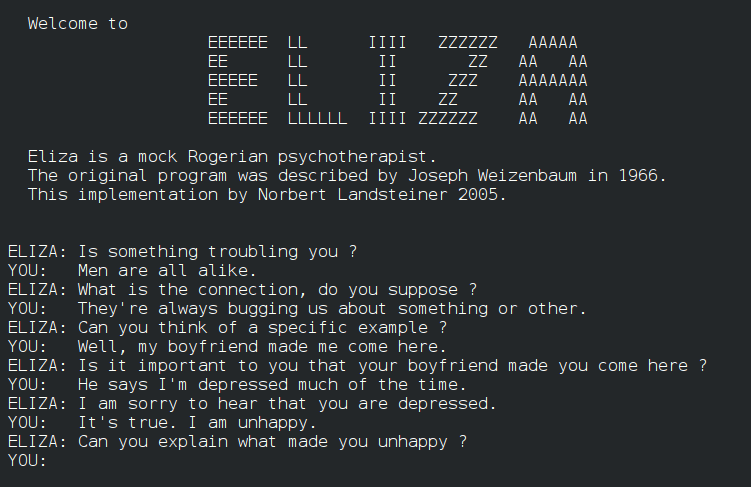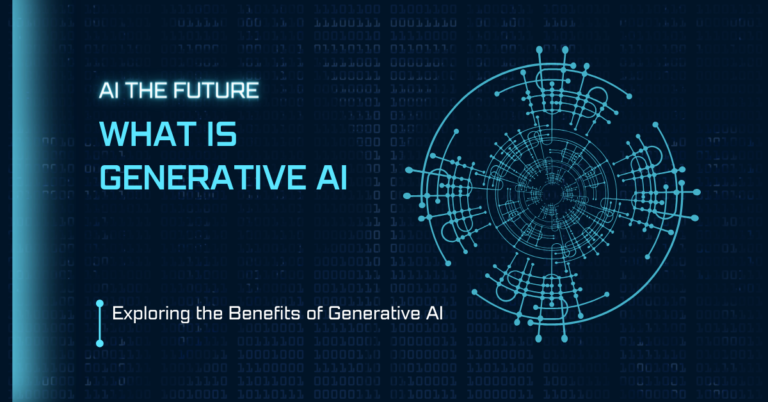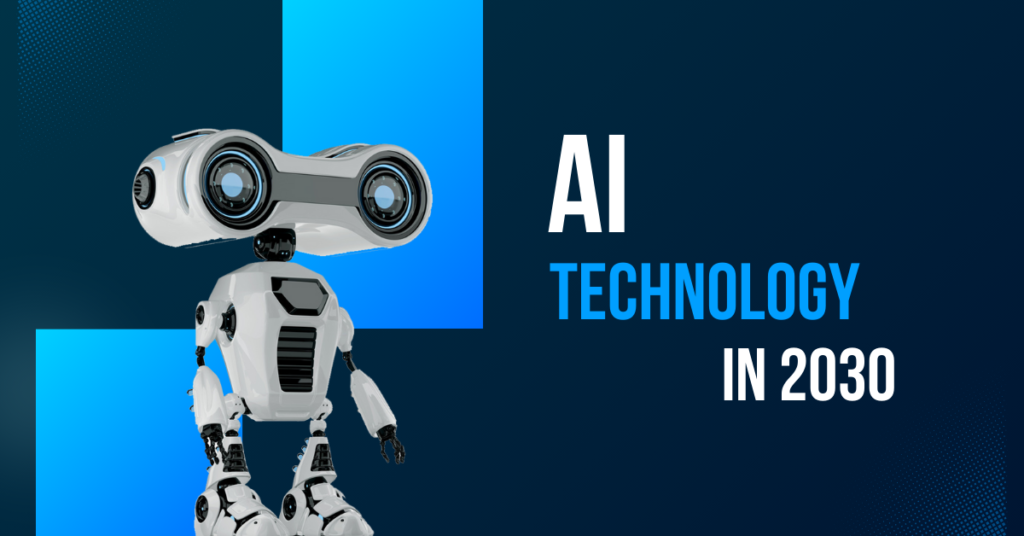What Is Generative AI
Generative AI is a subset of machine learning that enable computer to generate new data or content that appear realistic and authentic. Different Generative tool produce new audio, video and images content but it is text-oriented conversational AI that has changes the World
Generative AI became very famous in a months after ChatGPT, a chatbot based on OpenAI GPT-3.5 neural network model, released on November 30, 2022
GPT stands for generative pretrained transformer, It is a type of artificial intelligence algorithm that underlying neural network architecture
Early History:
Generative AI was first time introduced in the 1960s in chatbots
Here’s a brief history of Generative AI:
ELIZA (1966): One of the earliest examples of generative AI was ELIZA, a chatbot that could simulate a psychotherapist. It used simple pattern matching to generate responses based on user input. While not truly “intelligent,” it demonstrated the potential for AI to create text ELIZA was one of the first chatterbots and is considered a significant step in the history of artificial intelligence and natural language processing.
Markov Chains(1980):Markov Chains themselves are mathematical models and don’t have visual representations from 1980, you may be interested in their early applications in computer graphics and text generation.
In the 1980s, researchers began experimenting with using Markov Chains to generate images and text. These early applications were often simple and limited in their output, but they laid the groundwork for more sophisticated generative AI models that would emerge in later decades.
Generative AI vs Artificial Intelligence
Generative AI and Artificial Intelligence (AI) are related, but they have differences in many ways:
- Common attributes: Both of these required a large amounts of data for training and decision-making. Both learn patterns and information from the data and use that “knowledge” to make predictions and adapt their own behavior. Optionally, both can be improved over time by adjusting their parameters based on feedback or new information we provide them.
Artificial Intelligence (AI):
Broader Concept: AI encompasses a wide range of technologies and approaches that enable machines to simulate human intelligence. This includes tasks like learning, problem-solving, perception, and language understanding.
Various Subfields: AI has various subfields like machine learning, deep learning, natural language processing, computer vision, robotics, and more.
Applications: AI is used in a lot number of applications, such as recommendation systems, fraud detection, autonomous vehicles, medical diagnosis, and language translation. computer vision system
Generative AI:
- Specific Subset of AI: Generative AI is a specific branch of AI that focuses on creating new content, like text, images, music, videos, and code
- Creative Output: It aims to generate original and creative outputs that are similar in style or content to the data it was trained on.
- Models: Generative AI models, such as Generative Adversarial Networks (GANs), Variational Autoencoders (VAEs), and Transformer-based models like GPT-3, are designed to learn patterns from data and generate new content based on those patterns.
- Applications: Generative AI is used in creative fields like art, music, and writing, as well as in practical applications like generating marketing copy, designing products, and creating synthetic data.
How Generative AI Work:
There are two answers to the question of how generative AI models work.we know how they work in detail because humans designed their neural network implementations to do exactly what they do, iterating those designs over years to make them better and better.AI developers know exactly how the neurons are connected; they engineered each model’s during training process. Yet, in practice, no one knows exactly how generative AI models work that’s the truth.
“We don’t know how they do the actual creative task because what goes on inside the neural network layers is way too complex for us to understand, at least today,” said Dean Thompson
Start with the brain:
the idea of the generative AI model came from the human brain these generative model work in the same ways as human brain do there are a lot of complexity in the human brain as the same there is lot of complexity in neuron network
Build an artificial neural network
All generative AI models begin with an artificial neural network encoded in software the artificial neurons are stacked in layers, similar to how real neurons are stacked in the brain.
Each layer may have tens, hundreds, or thousands of artificial neurons, but the number of artificial neurons is not what AI researchers focus on. Instead, they measure models by the number of connections between artificial neurons.
Teach the new neural network model.
Large language models are given volumes of text to process and tasked to make simple predictions, such as the next word in a sequence or the correct order of a set of sentences. In practice, though, neural network models work in smaller units called tokens, not words.
Benefits of Generative AI:
The benefits that generative AI can bring to a business derive mainly from three attributes: knowledge synthesis, human-AI collaboration, and speed With generative AI, organizations can build custom models trained on their own institutional knowledge and intellectual property, after which knowledge workers can ask the software to collaborate on a task in the same language they might use with a colleague first they have used.
Increased productivity:
Knowledge workers can use generative AI to reduce their time spent on routine day-to-day tasks they have performed By generative AI, fewer employees can accomplish tasks that previously required large number of teams or hours of work in a fraction of the time.
Reduced costs:
Due to Speed, generative AI tools reduce the cost to complete processes, and if it takes few minute of the time to do a task, the task costs half as much as it otherwise would. In addition, generative AI can minimize errors in a sentence, eliminate downtime, and identify redundancies and other costly inefficiencies that are required to do a same work.
Improved customer satisfaction:
Customers can get a superior and more personalized experience through generative AI–based self-service and generative AI tools that improved within the passage of time
Limitations of Generative AI:
Anyone who has used generative AI tools for education and/or research has likely experienced their best-known limitation: They make up stuff. Since the model is only predicting the next word, it can extrapolate from its training data to state false with just as much authority as the truths it reports. If a business sets unrealistic expectations or does not effectively manage the AI technology, the consequences can harm the company’s performance and reputation and reduced its sales.
Computational power and initial investment:
Generative AI models require large amounts of computing power for both training and operation. Many companies lack the necessary resources and expertise to build and maintain these systems on their own risk. This is one reason why much generative AI development is done using cloud infrastructure computer
Resistance from staff and customers:
Staff, especially long-time employees with ingrained protocols and methods, can struggle to adjust to generative AI, leading to a decrease in productivity while they adapt on their work flow. Similarly, staff may resist the technology for fear of losing their jobs work on years
Generative AI Tools:
ChatGPT is the tool that became most viral today, but a multitude of generative AI tools are available are available. For example, just for writing there is Jasper, Lex, AI-Writer, Writer, and many others. In image generation, Midjourney, Stable Diffusion, Bing copilot, Gemini and Dall-E appear to be the most popular today.
Generative AI Example:
- Deepfakes: These AI-generated videos can convincingly replace a person’s face in a video with someone else’s face, raising ethical concerns about misinformation and manipulation.
- Art and Design: Generative AI is being used to create unique works of art, design new products, and generate patterns for textiles.
- Game Development: Generative AI can create game levels, characters, and even entire game worlds.



